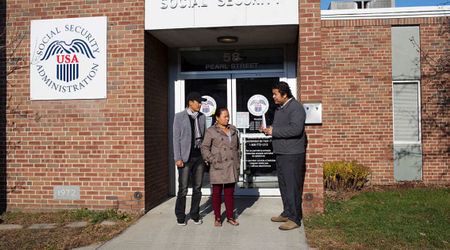New Study Offers Innovative ‘Pod-Sized’ Solutions to Combat UK Housing Crisis for Students

In the face of the UK's pressing student housing shortage, innovative approaches are being proposed to tackle the issue head-on. The scarcity of student housing in the UK is a significant concern. To combat this problem, new ideas for accommodation solutions are being explored. A new study by HEPI suggests that creating smaller student accommodations such as compact rooms of around 10 square meters could be a solution to UK's shortage of student housing. This could potentially lower rents by up to 30%. Martin Blakey, who used to lead the student housing charity Unipol, proposes this idea to encourage universities to offer more affordable housing options for students who can't afford expensive accommodations.

The need for change
Students are struggling with high rents and limited housing options. Compounding the issue are factors like rising interest rates and stricter regulations affecting the housing market, making it harder for students to find affordable housing. Even though the maximum maintenance loan in England has slightly increased, it's not keeping pace with the rising rental prices. Blakey argues in the study that the current approach to building student accommodations is costly. He suggests developing a cheaper model with fewer services and lower expectations from consumers.
Solution? Smaller, affordable accommodations
A potential solution lies in the introduction of smaller, more affordable accommodations. These include compact "pod-sized" rooms, around 10 square meters in size, which could reduce rents by up to 30%. Martin Blakey, former CEO of Unipol, advocates for universities to offer these lower-cost options, especially for students from less affluent backgrounds.
Current housing model
Existing Purpose-Built Student Accommodation (PBSA) is inherently expensive. There is a need for a more cost-effective model with reduced servicing and lower consumer expectations. Recommendations from a paper by the Higher Education Policy Institute (Hepi) suggest several changes. These include constructing smaller buildings with 300 to 350 student beds to manage costs better. Additionally, communal spaces for lounging and studying could be introduced. Adjustable energy supplements on rents and diversifying room sizes and facilities within buildings with different pricing structures are also proposed.

New approach
In addressing the longstanding issue of affordable student housing, Blakey underscores the need for innovative approaches such as the introduction of compact 10-square-meter rooms akin to those found in the popular Yotel hotel chain. Blakey's assertion that the sector has been "stuck" on the issue for an extended period highlights the urgency for reform. Mere rhetoric about affordability, he argues, is insufficient without fundamental changes in the design and structure of student accommodations. This call for action signals a departure from the status quo towards more proactive solutions.
Potential impact of new designs
These innovative room designs could yield rental rates substantially lower—by an estimated 25% to 30%—than the prevailing PBSA model. Such cost savings would not only alleviate financial burdens for students but also broaden accessibility, appealing to individuals across diverse socioeconomic backgrounds.

Challenges and barriers to implementation
Blakey expresses surprise that the idea hasn't gained traction earlier, given the prolonged escalation of PBSA rents over the past decade. The current scenario, where rents often exceed students' maintenance loans, underscores the critical need for immediate action. These observations shed light on the growing disparity between housing costs and students' financial means.
While the proposal holds promise, its realization presents challenges. Delivering these innovative housing solutions would require active involvement from educational institutions to promote and facilitate student diversity within these accommodations. Blakey emphasizes the reluctance of private sector developers to undertake such endeavors due to perceived risks, further underscoring the need for collaborative efforts between developers and educational institutions.





















